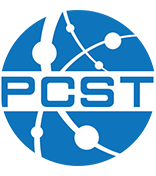Connecting science communication with evaluation Representations and practices ranging from lay public to science centers
Author: Carla Morais – University of Porto. Portugal
Co-authors:
- Teresa Aguiar – Faculdade de Ciàªncias da Universidade do Porto Portugal
- Luciano Moreira – Faculdade de Ciàªncias da Universidade do Porto Portugal
- João Paiva – Faculdade de Ciàªncias da Universidade do Porto Portugal
- Ana Teixeira – Faculdade de Ciàªncias da Universidade do Porto Portugal
We report a study on the social representations of science communication among the audience and in science centers to understand the meanings around the field of science communication and the relations between representations and practices in science centers. A sample of 294 adult participants answered an online word association questionnaire. Prototypical and similitude analyses were conducted with IRAMUTEQ. Also, 10 participants from two Portuguese science centers (including stakeholders, staff, and visitors) were interviewed about their views and practices on science communication and its evaluation. Data were analyzed with NVivo. Results suggest that the public has a poorly structured social representation of science communication. Consisting of diversified and weakly tied ideas, science communication is represented as an important, necessary activity of sharing knowledge, via papers or conferences almost without references to the public and their role in science communication. Similarly, in science centers, science communication is mostly done by researchers, based on communicating factual information, in simple language to enhance the public’s literacy. Science communication evaluation is restrained to obtaining informal feedback without systematic procedures. The science centers representations and practices suggest the prevalence of deficit and contextual models, given the emphasis on factual, although contextualized, scientific content. Representations of science communication in science centers resonate with the public’s poorly structured ideas. The analysis corroborates the need to think of ways to promote audience’s engagement and evaluation practices in science centers. The solution proposed by the I SEA Project, which focuses on deep-sea ecosystems, consists of moving evaluation into the center of the process of communication through a non-invasive procedure, i.e., virtual reality. Hopefully, the integration of communication and evaluation in a unique process, making it relevant for institutions and visitors, will help to promote the adoption of more dialogical models and consolidate the value of science communication within the public.
The author has not yet submitted a copy of the full paper.
Presentation type: Visual presentation
Theme: Transformation
